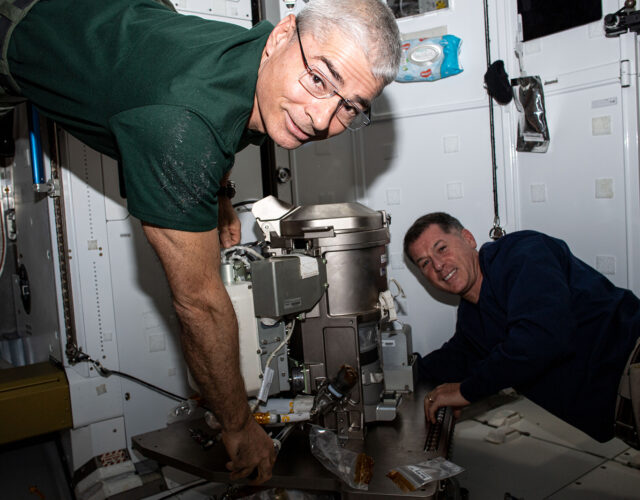The toilet broke down just a week into Valentin Lebedev’s record-setting, 211-day stay in orbit.
Neither Lebedev nor his fellow cosmonaut aboard Salyut 7, Anatoly Berezovoy, could rest until it was repaired. The toilet was a “mission critical” system. Even short periods without a functioning sanitation system could bring their operation to a messy halt.
It was unpleasant work for the cosmonaut heroes. The problem wasn’t so much playing the role of “sewer workers,” as Lebedev noted in his diary on May 19, 1982. “After all, it’s our own waste,” he reasoned. No, the onerous part was dealing with the labyrinthine septic system and the tedious connecting and disconnecting of the “many different plugs, adaptors, and tubes.”
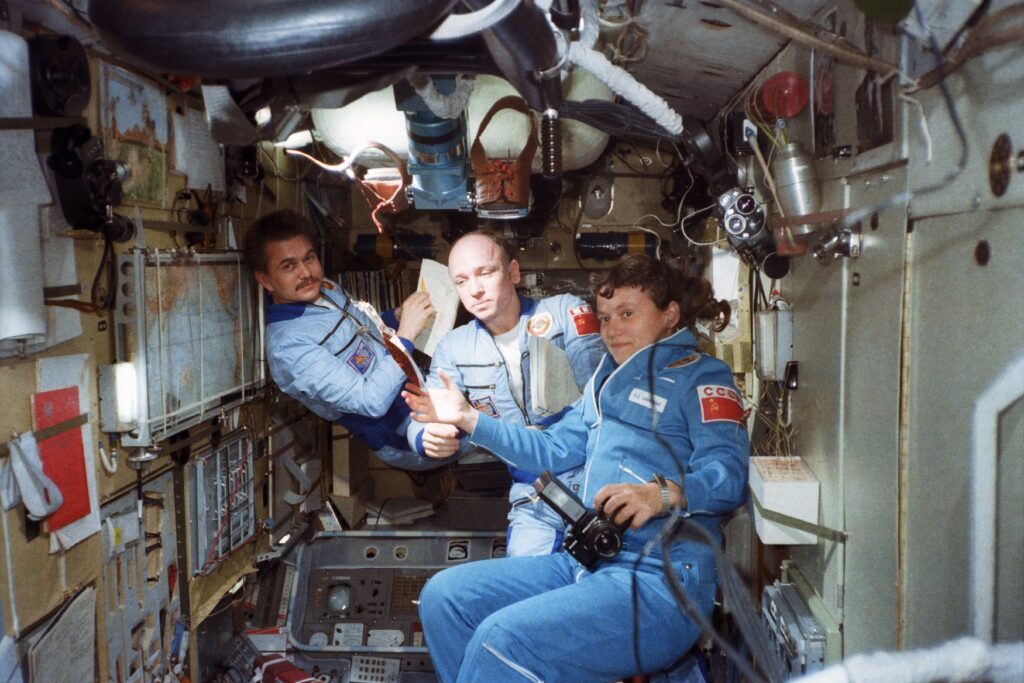
Answering nature’s call in space hasn’t changed much since the 1980s. As astronaut Scott Kelly said after arriving at the International Space Station (ISS) in 2015, the space commode remains “the most important piece of equipment to master.” It was a lesson a SpaceX crew learned in September 2021 after a tube connected to the toilet’s storage tank came loose.
Yet few popular accounts give much space to the earthier aspects of the space race. According to the New York Times, which had it from CNN, SpaceX did not want to get into any “gory details” about their malfunctioning system. In skirting the subject in 2021, the company followed a long-standing pattern. For decades glossy magazine pages have shown the same pictures of stylish Americans atop stylish American cars, their sunglasses leveled on the bright Florida sky, watching sleek, white rockets powering upward. Like those Kodachrome spectators, the history of the space program is often fixated on looking up, leaving unsung the sanitary engineering work that helped create fully artificial support environments for living in space. The fact is, a rocket can get you into space, but if you want to stay there longer than about 90 minutes, you need a functional commode.
After Apollo, the toilets aboard the early Skylab and Salyut stations, as well as those on the later Mir station and the American space shuttles, were experiments-in-progress that required regular attention. Being an astronaut often meant being a “space plumber,” as NASA dubbed Drew Feustel and Scott Tingle during their ISS mission in 2018. But these finicky lavatory systems beat earlier alternatives. During the late 1960s and early 1970s, Apollo astronauts’ only recourse were plastic bags. One of the Apollo 11 mission’s unused bags, titled “defecation collection device,” is now a popular exhibit at the National Air and Space Museum.
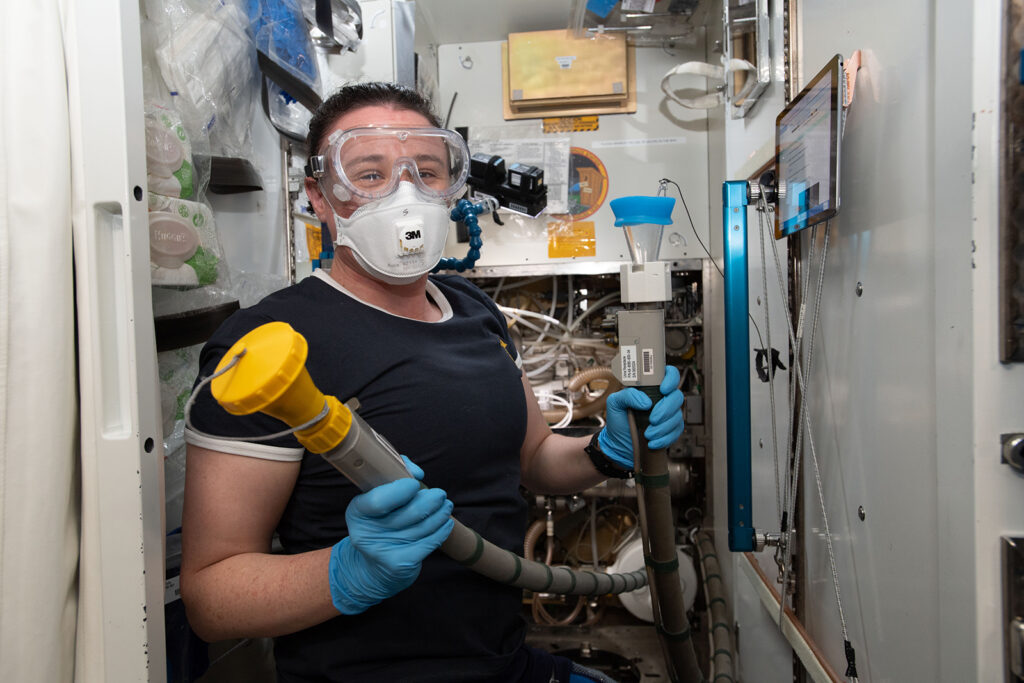
As historian of science Kärin Nickelsen and I have shown in our book Far Beyond the Moon: A History of Life Support Systems in the Space Age, from the very start of the space age, the United States and Soviet Union poured money into science and engineering projects aimed at managing waste in ways that went beyond simple disposal. Ever since, each space-venturing nation has worked to perfect an artificial environment that can continuously turn waste into useful material. Several European countries have research in progress, as do the Japanese. The challenge is to make use of those products we call “waste” to support life in space.
Such efforts act on the space programs’ radical environmental view that ultimately there is no “waste” inside a closed system. In 1991, during planning for the never-built American space station Freedom, planetary scientist Wendell Mendell declared that “the term ‘waste’ becomes an oxymoron [in a closed-loop life-support system] because every atom contributing to organic chemistry is precious.”
The goal of turning “waste” back into food and water underpinned the work of life scientists inside the space programs as they struggled to solve the critical problem of single-use consumption. But as Apollo astronauts went to the Moon and back and the Anthropocene began its great acceleration, an even more radical idea took shape among these scientists—the lessons that apply to a space capsule also apply to the whole Earth.
Remember the run on toilet paper early in the COVID-19 pandemic? We bravely ventured out from our houses and apartments, only to be stunned by empty supermarket shelves where toilet paper had once been abundant. By May 2020, my parents had squirreled away a plentiful 20 rolls; I had six left; a friend living outside Albuquerque had only two. Social media was spreading scenes of fights over a last roll, but also stories of sharing and making do. In a world forced to socially isolate, toilet paper became the critical commodity.
Toilet paper is just one link in our closed-circle lives, a link that for a few months threatened to break. In that moment, toilet paper and pasta were the most visible and immediate parts of the many interconnected cycles of food and waste, birth and death, flowering and decay, which are part and parcel of life lived in a closed system, like that of Earth itself. For the moment, everyone is stuck inside a thin layer of habitable biosphere on a small blue-green planet orbiting, as Douglas Adams observed, an insignificant yellow sun. Or to borrow Carl Sagan’s description, we’re crammed together on a mote of dust suspended in a sunbeam.
So after too much time stuck inside, though now with plenty of toilet paper, we should spare a thought for the men and women of the Soviet space program who have endured a series of claustrophobic experiments known as BIOS in Krasnoyarsk, Siberia.
In 1967 three cosmonauts spent a full year inside BIOS-2, the Soviets’ second attempt to simulate a closed ecosystem. The entire living compartment measured 4 meters by 3 meters; it had three bunk beds and small folding tables. In his memoir, A Year in a Starship on Earth, Andrey Bozhko told readers how, in a “tiny galley,” he and his two crewmates cooked food and cultivated future meals in the attached conservatory. The three tested one of the most complex life-support systems ever devised, growing wheat, algae, sweet potatoes, and herbs. The cosmonauts had nearly three times the area for farming as they did for living, but still their fresh-food supply only supplemented their stock of canned food. Their washing allowance was one bucket of water every 10 days, provided the recycling system was working. Monitoring the cosmonauts’ psychological endurance and the toll of confinement, hunger, and austerity was part of the setup.
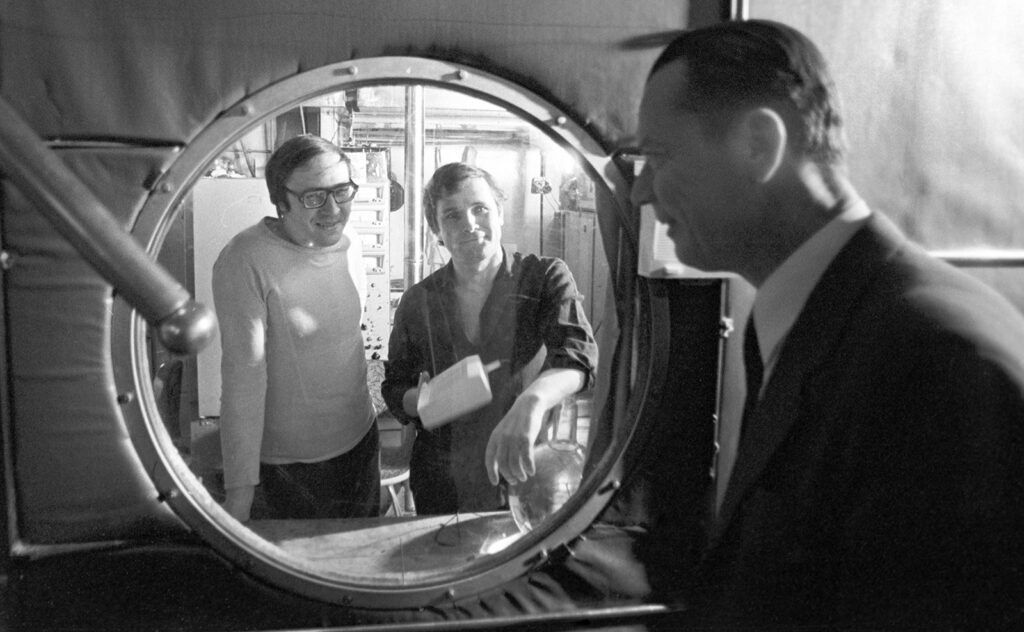
The grand aim was to create a “planetship ecological system,” as biologist and aspiring cosmonaut Bozhko later described it. Many different types of organisms would be included in the later BIOS-3 facility—“yeast, fungi, aquatic snails, slugs, fish, rabbits, chickens, etc.,” to replicate near-natural cycles. But Bozhko’s experience taught him how difficult it was to build these artificial environments: a real planetship, he said, “is still far in the future, although, in principle, the feasibility of such projects is not in doubt.” Among environmental and systems engineers there is little doubt, but the challenges of fully recycling waste in an artificial environment are formidable.
An early moment of turning experiment into reality came in 1982, when cosmonauts-turned-plumbers Lebedev and Berezovoy also became the first people to successfully grow plants in space. It turned out that plants provided more than food—just seeing and feeling living plants soothed the cosmonauts’ minds. Lebedev believed that “without plants, prolonged space explorations are impossible.” Cosmonaut Georgiy Grechko, who visited Salyut 7 in 1985, floated into the plant chamber as often as he could for psychological support.
Though stuck firmly on Earth, Bozhko learned that “green plants create a good mood, distract from the monotonous and tedious routine matters, are calming. I am now a staunch supporter of those who believe that the plantation of green plants [will] bring great joy to the crews of space ships and stations. And without fear of exaggeration, I can propose that in space the ‘lilac branch’ . . . will mean much more for man than on Earth.”
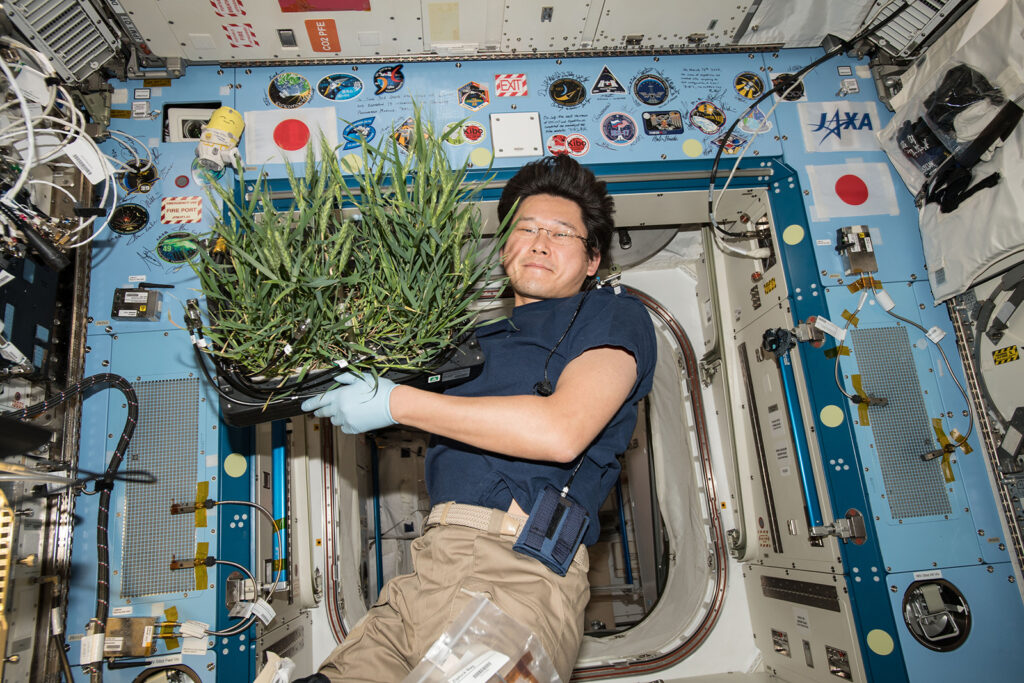
In 1972 economist and sustainable development pioneer Barbara Ward and biologist René Dubos declared the automobile “man’s first technological love.” But the pair warned that the “heavy breathing of his motorized half pollutes the air, invades the lungs, and builds up smog in cities.”
Ward and Dubos prescribed a corrective in Only One Earth: The Care and Maintenance of a Small Planet. Just as American and Soviet space programs had evaluated every aspect of the closed-loop systems they created, governments should attach monetary values to the inputs and outputs of every consumption and waste cycle. A price needed to be placed on the entire world, from a barrel of radioactive waste to a dead whale. Consumers and waste creators would be charged appropriately. How quickly might automobile drivers switch to public transportation, Ward and Dubos asked, when forced to pay not only for the gasoline going into their car but also for the CO2 coming out?
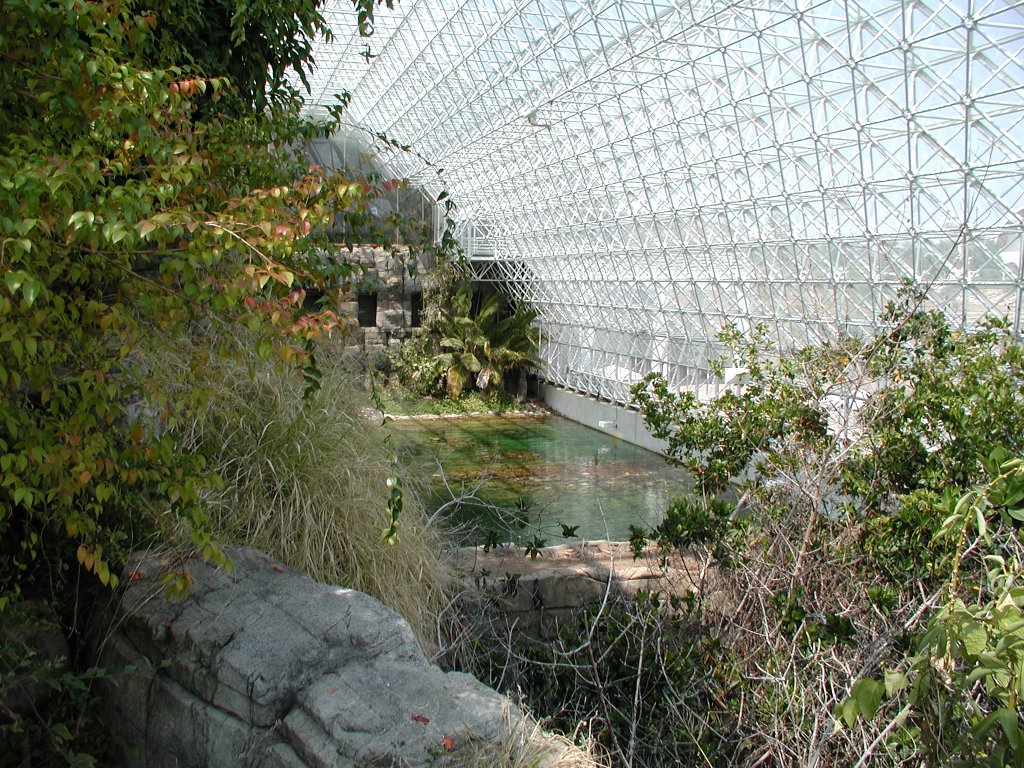
Forty years later, Roy Scranton, a University of Notre Dame professor, argued that our civilization is both funded and corroded by “burning oil, poisoning the seas, killing off other species, pumping carbon into the air, ignoring the ominous silence of our coalmine canaries in favor of the unending robotic tweets of our new digital imaginarium.” Assessing the acceleration of consumption and accumulation of disposable waste since the 1970s, Scranton saw far less hope than Ward and Dubos.
Werner Lang, director of the Center for Energy Efficient and Sustainable Design and Building, believes that, as we head toward a global population of 9 or probably 10 billion people, we are falling deeper into ecological debt. We may have instituted recycling and composting programs, but the real ideological transformation needed to achieve zero waste has yet to occur. We are yet to have the mindset of cosmonauts and astronauts: to live with our waste, we must invest in its infrastructure and consume the recycled products.
When humans do travel to Mars, they won’t be heroic adventurers; they’ll be plumbers and janitors. But in the same way, if humans are to continue to live on Earth—and for now we are all cosmonauts traveling aboard this spinning blue marble—we must also appreciate how mission critical our waste systems are and pay more attention to the plumbing. By extension, to maintain our environment, we need to realize that there is no such thing as waste.

